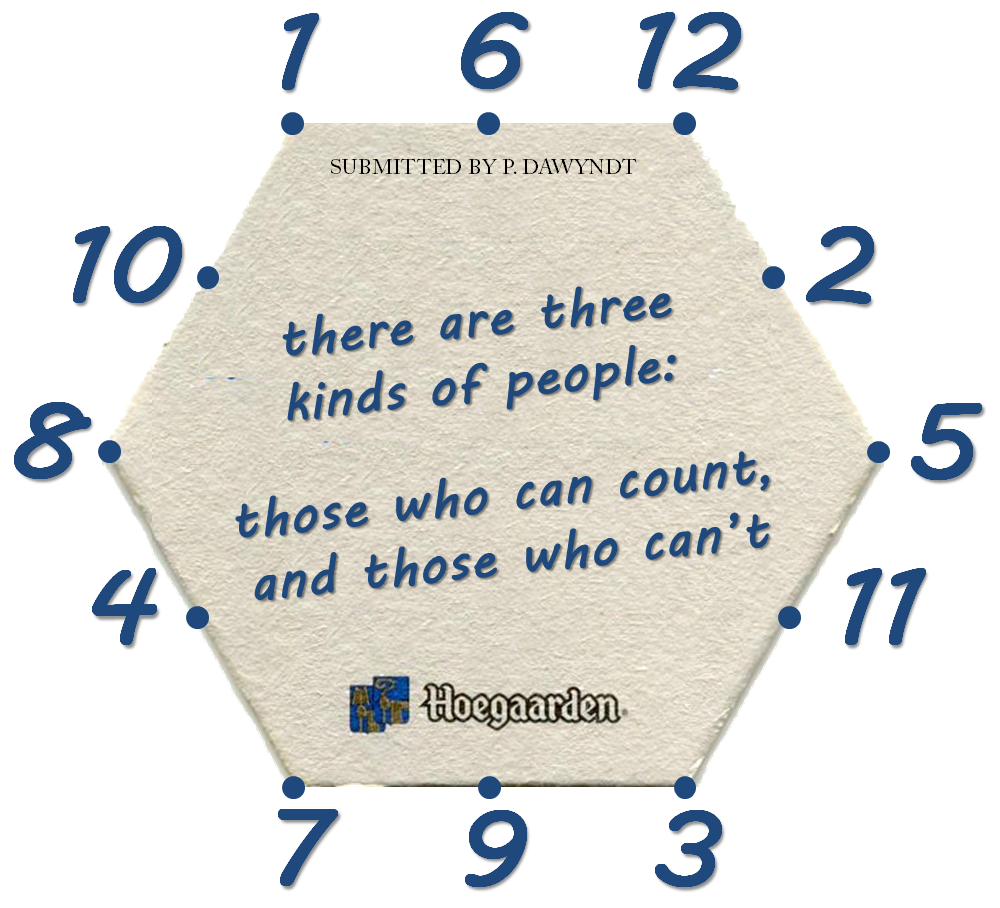A well-known pub game goes like this: take a hexagonal beverage coaster and put the numbers between 1 and 12 on each of the twelve corners and midpoints of the six sides, in such a way that the sum of the three numbers on each side is the same.
The image below gives a possible solution with sum equal to 19. There are many possible solutions, that don't necessarily result in the same sum. The example solution can be represented as the list of integers 1, 6, 12, 2, 5, 11, 3, 9, 7, 4, 8, 10. Such a list representation always starts with a number that is put at a corner point, and reads the numbers at all the corners and midpoints in succession. It does not matter what corner point is taken as the starting point, nor whether we read clockwise or counterclockwise.
The list of integers 1, 7, 12, 3, 5, 9, 6, 4, 10, 2, 8, 11 represents another possible solution with sum equal to 20.

In addition, the game does not necessarily needs to be played with hexagonal beverage coasters. Each beverage coaster with $$n$$ ($$n \geq 3$$) sides can be used. The general description of the game then becomes: put all numbers between 1 and $$2n$$ on each of the $$2n$$ corners and midpoints of the $$n$$ sides, such that the sum of the three numbers on each side is the same. The list of integers 4, 3, 5, 1, 6, 2 the represents a solution for triangular beverage coasters, the list of integers 5, 2, 6, 3, 4, 8, 1, 7 is a solution for square beverage coasters and the list of integers 7, 8, 1, 10, 5, 2, 9, 4, 3, 6 is a possible solution for pentagonal beverage coasters.
Assignment
Write a function valid_solution that can be used to determine whether or not a given list of integers represents a valid solution for the pub game described above. The function takes a list of integers as its first argument. The function can take an optional second integer argument $$s$$. The given list of numbers is a valid solution if all of the following conditions are met:
-
the number of elements $$n$$ in the given list of integers is even and greater then or equal to six
-
each integer between 1 and $$n$$ must occur exactly once in the list
-
the sum of any three numbers that are on the same side is equal to the other sums
-
if a value $$s$$ is passed to the optional parameter, the sum of the three numbers on the same side must be equal to $$s$$
The function must return the value True if the integers in the given list meet all the above conditions. Otherwise the value False must be returned.
Example
>>> valid_solution([1, 6, 12, 2, 5, 11, 3, 9, 7, 4, 8, 10])
True
>>> valid_solution([1, 6, 12, 2, 5, 11, 3, 9, 7, 4, 8, 10], side=19)
True
>>> valid_solution([1, 6, 12, 2, 5, 11, 3, 9, 7, 4, 8, 10], side=20)
False
>>> valid_solution([1, 7, 12, 3, 5, 9, 6, 4, 10, 2, 8, 11], side=20)
True
>>> valid_solution([4, 3, 5, 1, 6, 2])
True
>>> valid_solution([5, 2, 6, 3, 4, 8, 1, 7], 13)
True
>>> valid_solution([7, 8, 1, 10, 5, 2, 9, 4, 3, 6], 16)
True